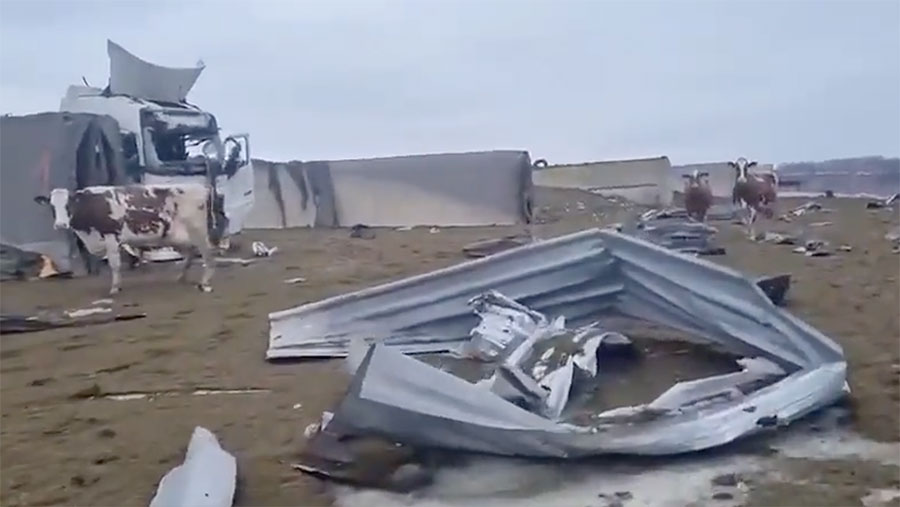Video of destroyed dairy farm in Ukraine sparks outrage
 © Twitter
© Twitter Video footage has emerged of what appears to be the aftermath of a military attack on a dairy farm in Ukraine that destroyed sheds and left cows wandering amid the wreckage.
Kees Huizinga, a farmer in Ukraine, shared footage on social media of the dairy farm in Kharkiv and wrote: “Just look at this. This is happening in Ukraine at the moment! This has to stop, NOW!”
The one-minute clip shows a large shed that has been ripped apart, leaving twisted metal and other debris scattered across the ground.
Cows are seen wandering near what appears to be a milk tanker that has been badly damaged.
This was a dairy farm in Kharkiv region.
Just look at this. This is happening in #Ukraine at the moment!
This has to stop, NOW!#StopPutinNOW #Farming #Farm pic.twitter.com/4GJXkCm1La
— A Dutch Farmer In Ukraine || Kees Huizinga (@DutchFarmerInUA) April 1, 2022
The video has sparked outrage and drawn further criticism of the devastation caused by Russian president Vladimir Putin’s invasion of Ukraine.
Within the thread is another image that purports to come from the same farm, showing piles of dead cows in a trench.
Commenting on the incident from his farm in the west of Ukraine, Victor Boltruchuk said he was convinced the image was from the same farm.
“The farm that was attacked was owned by one of the largest milk producers in the Kharkiv region,” he told Farmers Weekly.
“There are not that many red and white cattle in that area, yet they appear in both images, so I’m pretty sure they would have been caught up in the same incident.”
Mr Boltruchnuk said it had been reported in Ukrainian media that the attack was carried out by 500kg bombs dropped from the air in the early stages of the war.
The farm had over 1,000 cows, many of which were killed by the explosions or falling debris.
There were no military personnel or equipment on the site.
“I have spoken to other farmers in the region. If they are behind the front line, then the cows are still being milked, but the biggest challenge is being able to transport it to the towns and cities,” he said.
“Either the milk tankers are being shelled on the roads, or there is no power or electricity, so the milk ends up being dumped, or just given to local people.”
Working the land in the Kharkiv region was becoming increasingly difficult, he added, because where the Russians had been driven back, they had left landmines spread across the fields. “It’s too dangerous to take farm machinery there,” he said
While Mr Boltruchnuk said he had sympathy for the animals – and there were many other instances of dogs, cats, horses and even zoo animals suffering as a result of the war – generally there was fewer possibilities for people to care for them, given the human atrocities that were also taking place.
